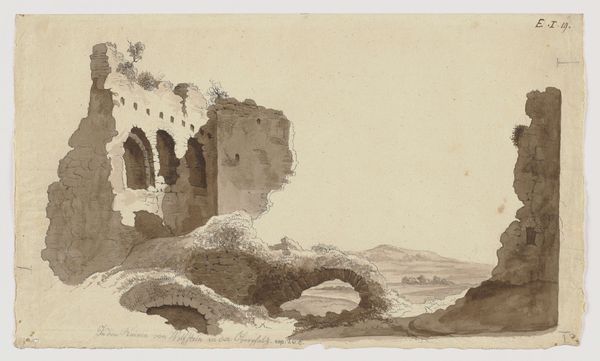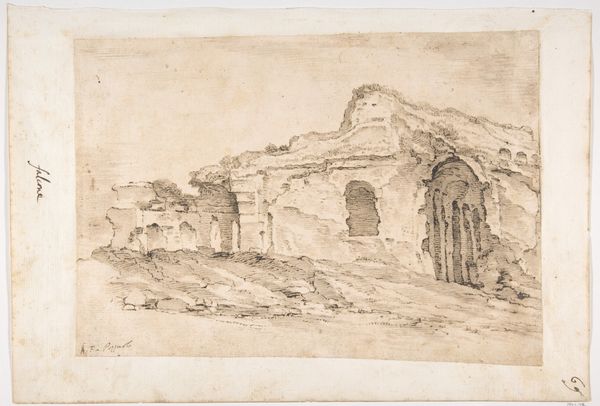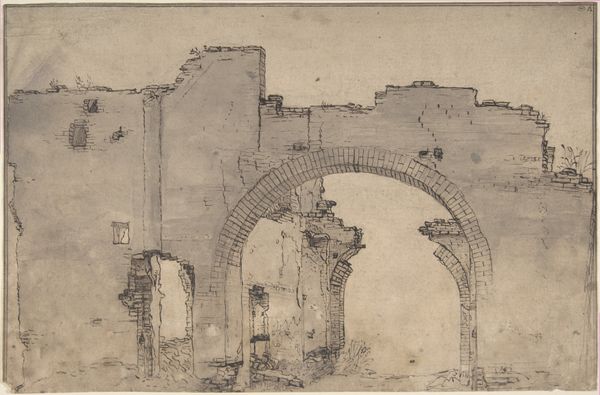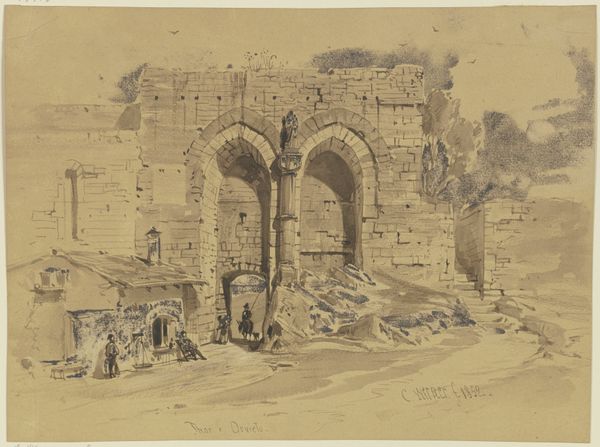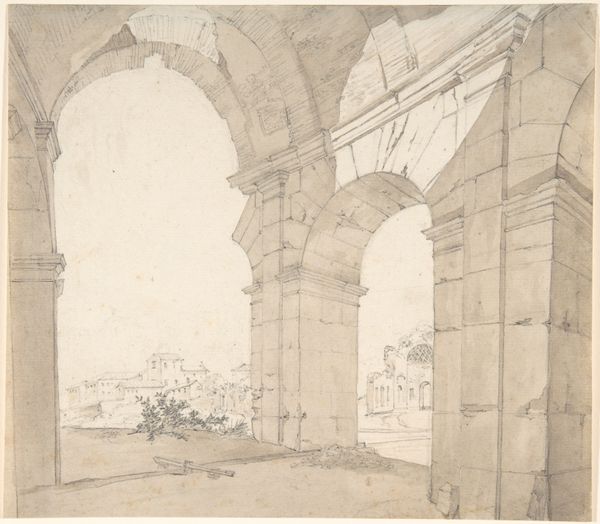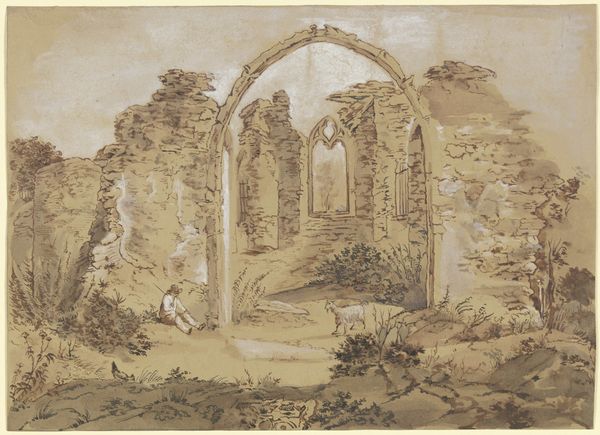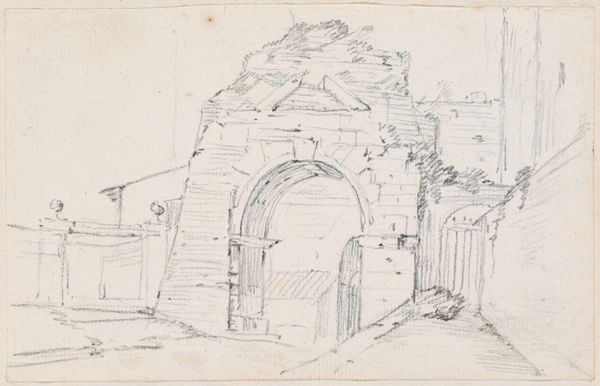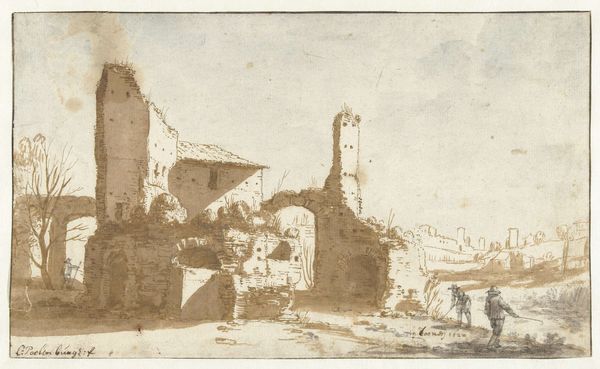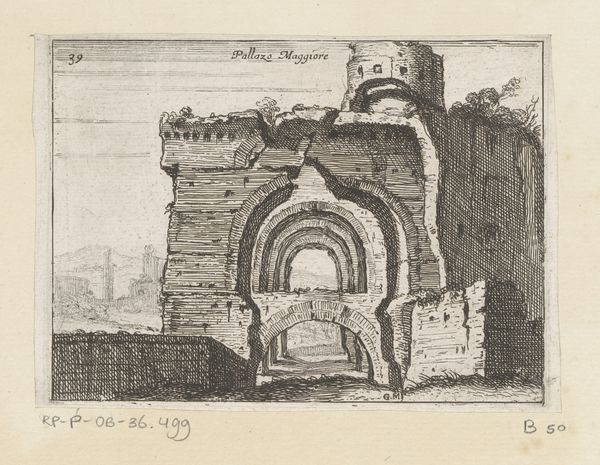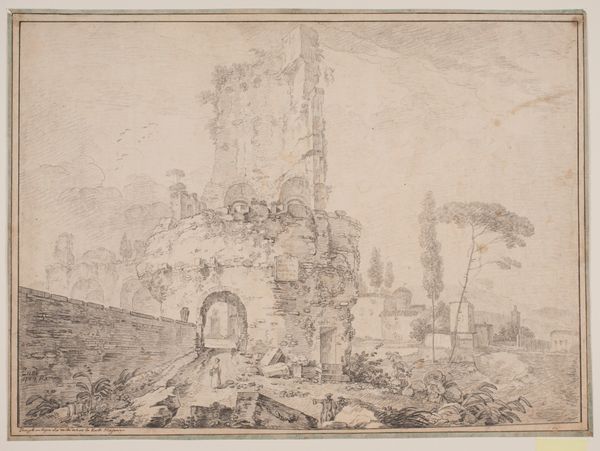
drawing, tempera, fresco, watercolor
#
drawing
#
tempera
#
landscape
#
etching
#
fresco
#
watercolor
#
romanticism
#
cityscape
#
watercolour illustration
#
history-painting
#
watercolor
Dimensions: 150 mm (height) x 240 mm (width) (bladmaal)
Editor: This is Vilhelm Kyhn’s "Salomons kapel. Bornholm," created in 1843. It seems to be done in watercolor, and maybe some kind of ink drawing? It feels both serene and melancholy. What do you see in this piece? Curator: This image is rich in cultural memory. Kyhn captured not just the physical structure of the chapel ruins, but also evokes a sense of time, history, and the human spirit’s enduring relationship with sacred spaces. Notice the prominence of the arch. Editor: The arch? I guess it's central, but it feels broken... incomplete. Curator: Indeed. The arch, even in its ruined state, still acts as a portal, framing a view into the infinite – the sky or the sea. Consider its symbolism: traditionally, the arch represents triumph, transition, a gateway. Here, though, it's fractured. What could that signify about how the Romantics viewed the past? Editor: Hmm... maybe that the past is something to be admired, but that it’s also broken, inaccessible in its entirety. A fragment of something powerful, but definitely not whole? Curator: Precisely! And beyond the single structural element of the arch itself, look at the texture and the technique employed. The use of watercolor lends it an ethereal, almost dreamlike quality. Kyhn is subtly prompting us to contemplate our connection to ancestry and heritage and tradition. Editor: I see it now. It’s like he's not just showing us the ruin, he is using it as a symbol of memory. Curator: Absolutely. Kyhn uses the ruins of this chapel to reflect on the passage of time, the strength of cultural continuity despite material decay. And also invites the viewers to meditate on their own sense of belonging in a long, long history. Editor: I definitely see a deeper meaning here now!
Comments
No comments
Be the first to comment and join the conversation on the ultimate creative platform.
